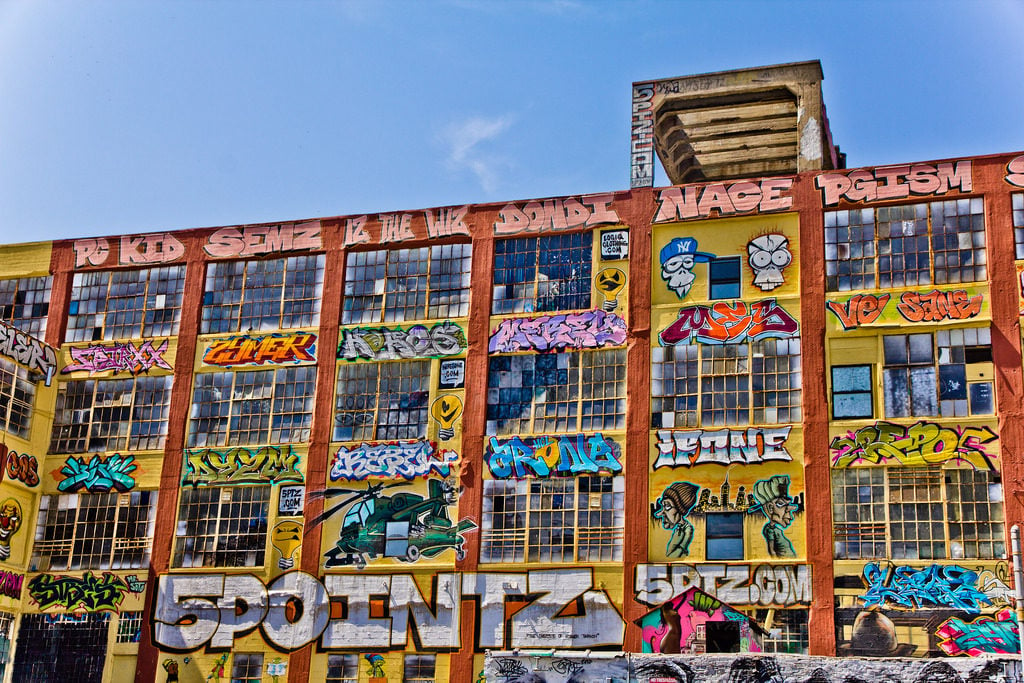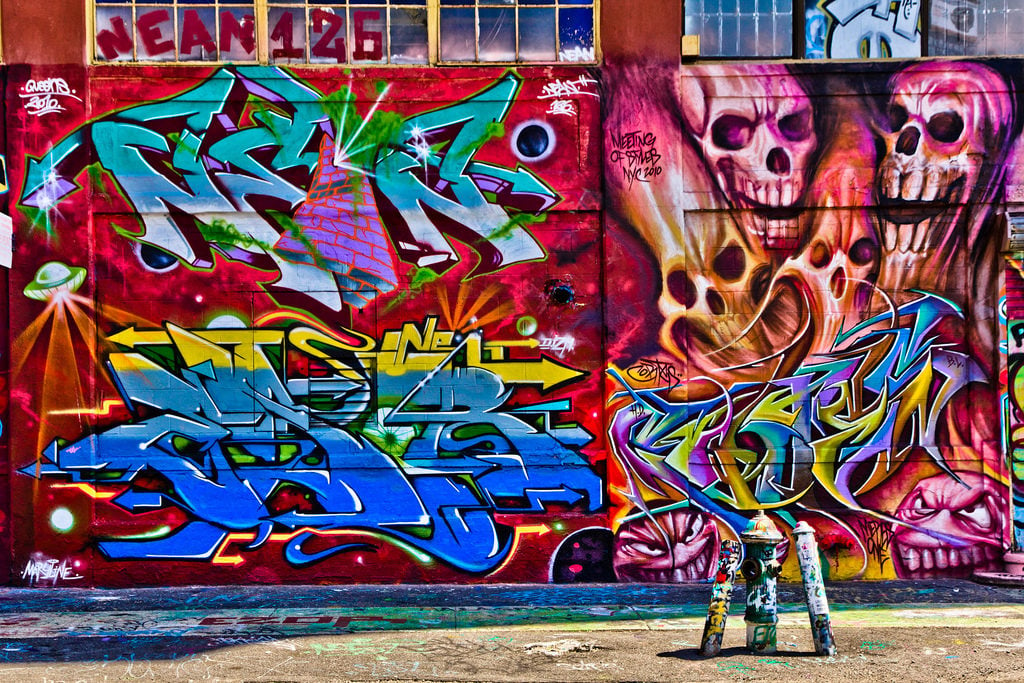Law & Politics
5Pointz Graffiti Artists Get Their Day in Court Over Destruction of Murals
It's being called "a groundbreaking decision for aerosol artists around the country."

It's being called "a groundbreaking decision for aerosol artists around the country."

Brian Boucher

A judge’s order will send to trial a suit by a group of graffiti artists against a real estate owner who destroyed their murals at the 5Pointz site in Queens, New York. After a four-year battle, Senior US District Judge Frederic Block’s order, filed March 31, grants the 5Pointz graffiti artists’ right to sue under the Visual Artists Rights Act of 1990.
At issue is the former site of giant graffiti murals that covered a city block’s worth of warehouses in Western Queens, across the street from MoMA PS1. They attracted tourists by the busload and featured works by artists from as far away as Australia and Japan. Graffiti artists had been plastering the walls with their works since 1993.
Curated by a graffiti artist named Meres One (Jonathan Cohen) since 2002, the colorful murals were a reminder of a grittier past in a gentrified neighborhood bustling with new high-rise construction. The owner, G&M Realty’s Gerald Wolkoff, also rented out space to artists there at low cost.
When Wolkoff resolved to destroy the buildings to make way for a new residential development, artists brought suit to stop him in order to preserve their artworks, asserting a claim under VARA as well as “intentional infliction of emotional distress,” conversion, and property damage. Their case was thrown out, and, without warning one night during November 2013, the owners whitewashed the murals, erasing, as the artists’ spokeswoman told the New York Times, the work of at least 1,500 artists. The abrupt erasure allowed the artists no time to document or preserve their work.
A group of 17 artists brought another federal suit in US District Court for the Eastern District of New York in June, 2015, claiming that their work was protected under VARA, which provides for damages if the works are of “recognized stature,” typically determined by expert witnesses. The plaintiffs’ witness put forth corporate commissions and celebrity clients of some of the street artists, as well as museum professionals’ opinions and the artists’ online presence and press coverage, among other factors.

Murals at 5Pointz. Photo Pelle Sten, via Flickr.
Block’s order allows the VARA claim but dismisses the artists’ other claims.
“The court’s order denying dismissal of our client’s claims is a groundbreaking decision for aerosol artists around the country,” said Eric Baum of Eisenberg & Baum, the firm that is representing the artists. “The message is that if you destroy art protected by federal law, you will be held responsible for your actions…We are confident that at trial both the artists and their work will be determined to be of recognized stature.”
Reached by phone on Thursday, Wolkoff dismissed the complaint. “They themselves went over their paintings for 20-some-odd years!” he said, explaining that new artists would cover up the work of previous painters, by mutual agreement. “The paintings were never intended to be permanent. That’s street art! The beauty of it is that it changed.”
As Amy Adler, law professor at New York University, observed in a phone interview, “Key in this matter is whether the works are of recognized stature, but the statute doesn’t define recognized stature and there’s not a lot of precedent since it’s not a heavily litigated area like fair use. And it’s not necessarily determined by the criteria that the art world would apply.”
Presented with Wolkoff’s argument, she did find it worth considering.
“There’s something ironic,” she said, “about trying to preserve an art form that’s about transience.”